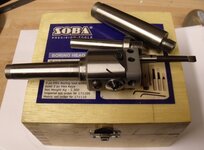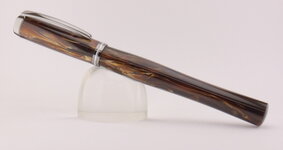wood-of-1kind
Member
This question is directed towards our "kitless pens" folks here at IAP. Can you offer your comment(s) regarding the use of BAKELITE for making your components for your kitless pens. Body, cap, section for fountain pen.
I personally know that it "machines" well but I have never used taps and dies on this type of material. Does it hold a thread well? Can you use "regular" taps and dies as you would on say acrylic, ceboplast, poly resin?
Any input from you (user) is appreciated.
I personally know that it "machines" well but I have never used taps and dies on this type of material. Does it hold a thread well? Can you use "regular" taps and dies as you would on say acrylic, ceboplast, poly resin?
Any input from you (user) is appreciated.


